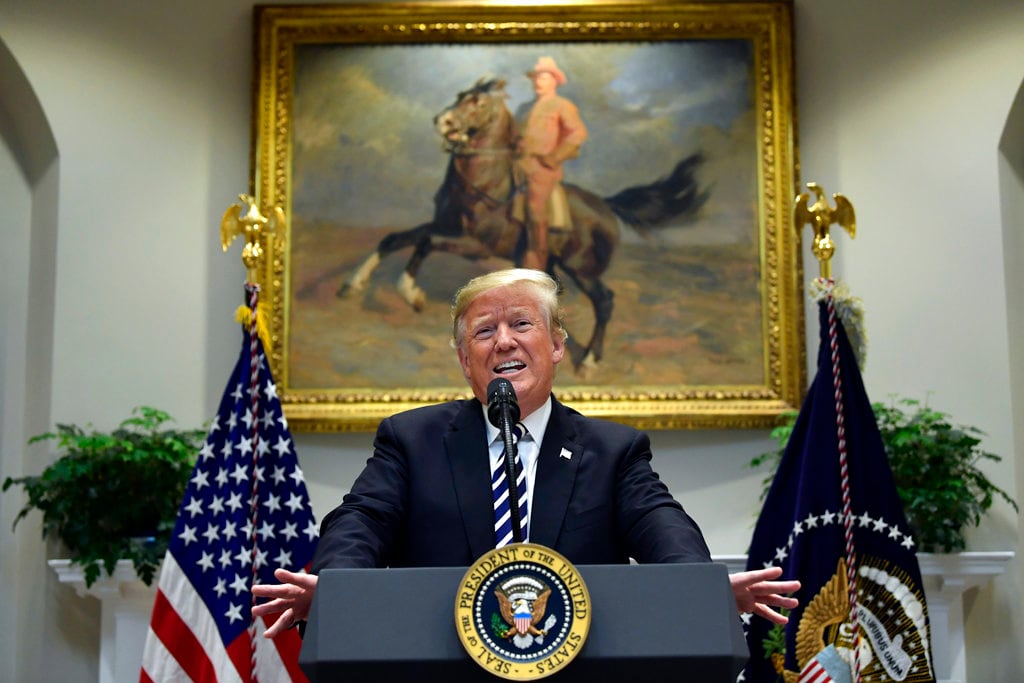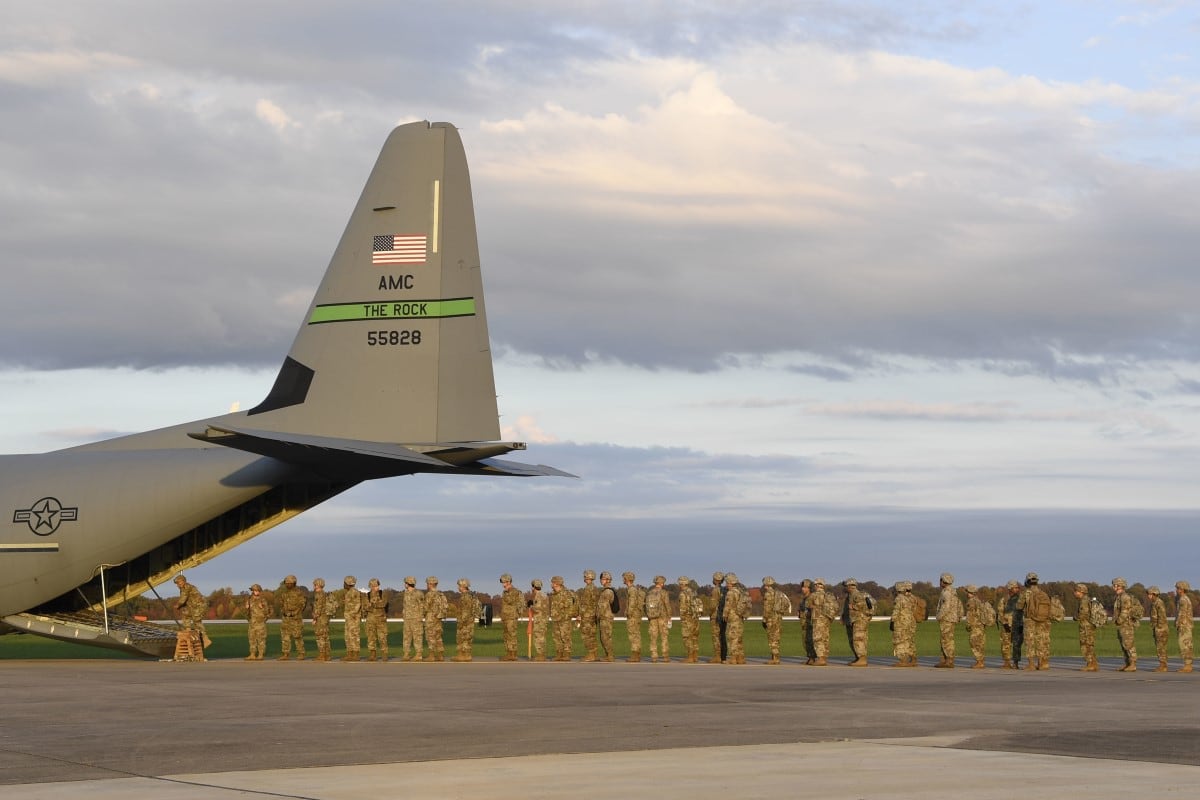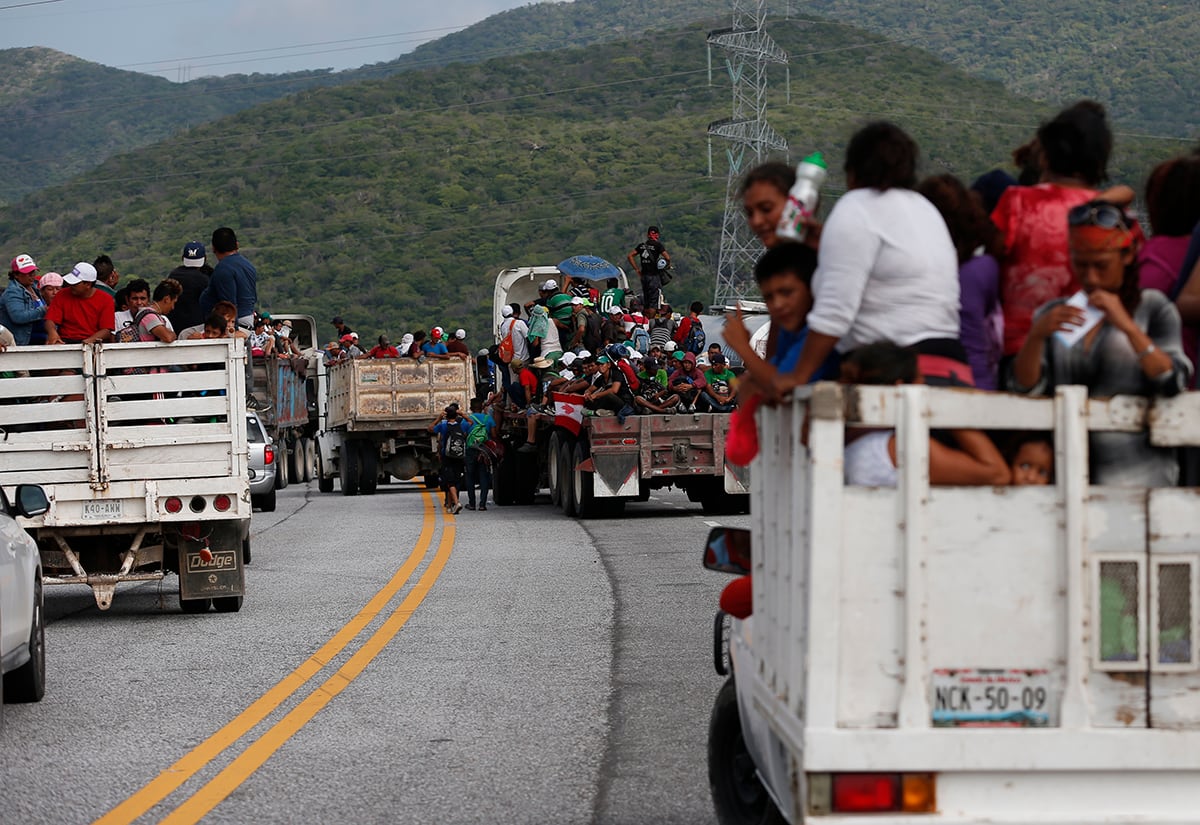President Donald Trump on Thursday told troops deploying to the border they could shoot migrants who might throw rocks at them.
[Editors note: President Trump appeared to walk back his remarks about rules of engagement on Friday.]
But what troops will actually be able to do — or should do — is tightly governed.
Experts on domestic military deployments said the president’s words would not offer protection to forces in the case that troops fire upon a migrant and cautioned that troops must know and follow the rules of engagement specific to this unique deployment.
“My understanding is that the president’s comments are irrelevant in a legal judgment about whether using lethal force was appropriate. There is a right to self-defense but there is a high bar against taking action against just rockthrowing,” said Center for Strategic and International Studies senior adviser Mark Cancian.
Former Chairman of the Joint Chiefs Army Gen. Martin Dempsey also took a hard and unusually public position on the rocks comments, saying forces won’t respond so disproportionately.
In the initial operations order to forces deploying under “Operation Faithful Patriot,” U.S. Army North gave the following guidance to troops:
Standing Rules on the Use of Force
Each domestic deployment of troops to any of the 50 states or U.S. territories are governed overall by Chairman of the Joint Chiefs of Staff Instruction 3121.01B, “Standing Rules of Engagement, Standing Rules for the Use of Force by U.S. Forces.” Two annexes, L and N, are specific to Defense Department missions in support of civilian authorities.
However each mission is unique and the rules can be slightly adjusted at a commander’s request.
“It’s imperative that it’s crystal clear” what the specific rules of engagement, or what Pentagon officials refer to as rules for the use of force in domestic deployments, are to this mission, a defense official said on the condition of anonymity. “I’m confident we are in a good place on that, based on the specific tasks we’ve been given.”
Each service member will undergo a required briefing on the rules for the use of force, and will be required to carry a card outlining precisely when they are and are not authorized to use lethal force.
RELATED

Who can be armed?
This week. U.S. Northern Command chief Air Force Gen. Terrence O’Shaughnessy said only forces required by their specialty to carry weapons will be allowed to be armed.
The operations order backs that up, directing that “except for law enforcement, force protection, and security personnel who carry an issued firearm for duty on a routine basis, DoD personnel are not authorized to carry individual service weapons during a [defense support for civilian authorities] mission, unless specifically authorized by the [Secretary of Defense.]”
In addition, all ammunition and weapons must be transported in sealed containers, and no service member is authorized to bring a personal weapon.
The Posse Comitatus Act
All active duty forces dispatched to the border are governed by the 1878 Posse Comitatus Act, which forbids troops from carrying out law enforcement duties inside United States territory unless Congress grants an exemption.
Under the act, federal military forces are prohibited from engaging in direct law enforcement, which includes making arrests, conducting searches, seizures, apprehension, evidence collection, interrogations, security patrols, seizures, stop and frisks, surveillance, crowd and traffic control, enforcement of a quarantine or isolation, or other similar police functions.
RELATED

Congress has amended that act some to increase the authorized level of support the military may provide for drug interdiction and to support border patrol.
According to the Congressional Research Service, under the extended support, the military may provide "assistance in maintenance or upgrade of equipment; transportation of personnel; establishment and operation of operations or training bases; training of law enforcement personnel; detecting and monitoring traffic within 25 miles of the border; road and fence construction; light installation along smuggling corridors; the establishment of command and control centers and computer networks; the provision of linguist and intelligence analysis services; and aerial and ground reconnaissance.”
Tara Copp is a Pentagon correspondent for the Associated Press. She was previously Pentagon bureau chief for Sightline Media Group.




